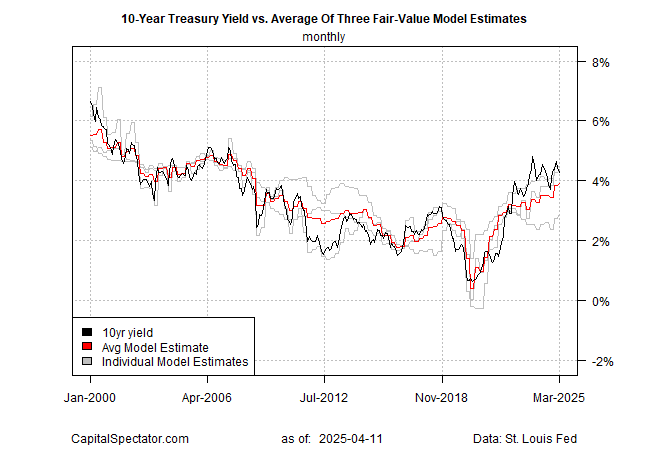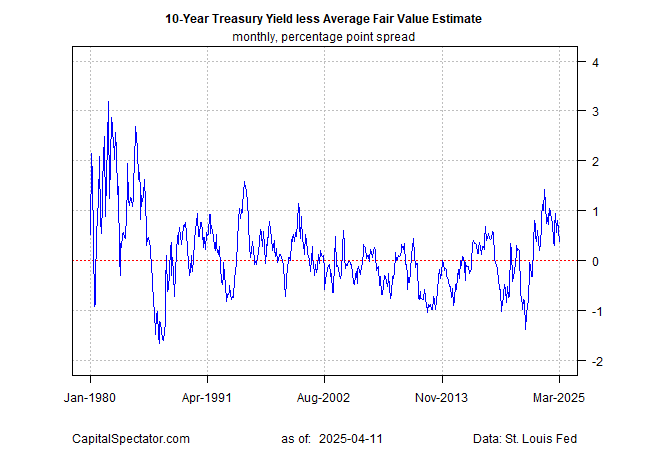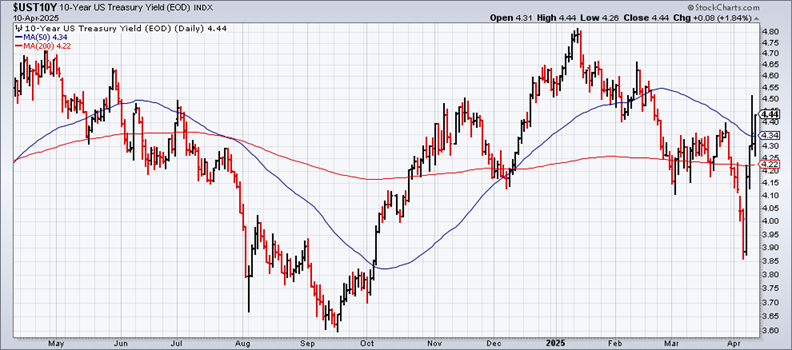The “fair value” for the US 10-year Treasury yield edged higher in March vs. the previous month and is now approaching the 4.0% mark – the highest estimate in 16 years. The analysis is based on the average of three models run by CapitalSpectator.com.
The current average monthly fair-value estimate is 3.91%, which remains below the actual 10-year yield. In yesterday’s trading, the benchmark rate rose to 4.44% (Apr. 10).
As discussed on these pages in recent history, a market premium for the 10-year rate has persisted since late 2022.
The latest increase in the average fair-value estimate suggests that the actual 10-year yield will remain relatively steady, if not trend higher in the near term.
History reminds that the market prices in an evolving run of premiums and discounts relative to the fair-value estimate, as shown by the spread in the chart below.
The current premium has pulled back from a relatively high level recently but looks set to continue in positive terrain for the near term. Several factors are expected to maintain the market premium, including renewed inflation risk related to a global trade war.
Consumer inflation eased in March, but the data does not yet reflect the higher prices that are expected due to increases in US import tariffs.
“I think it’ll take some time for the inflationary shock to work its way into the system,” said Preston Caldwell, chief US economist at Morningstar. “At first, [inflation data] might look better than it will be eventually.”
The softer CPI data for last month “is good news for the Fed, but the data seems stale,” advised US Bank Chief Economist Beth Ann Bovino.
An opposing macro force that could reduce the market premium by driving the 10-year yield lower: Slower growth if not recession, a risk factor that’s also heightened by higher tariffs.
The key question is whether inflation risk or slow growth/recession risk dominates for the 10-year yield’s path ahead. At the moment, it appears that the two risks are more or less balanced as the market churns in a range vs. recent history.
The wide swings in the 10-year yield in recent days suggest that investors are struggling to price in which risk is the bigger threat – inflation vs. slower growth/recession. A break-out above the recent peak (roughly 4.80%), or below the recent trough (3.90%), would signal a consensus in the crowd’s ex-ante risk evaluation.
